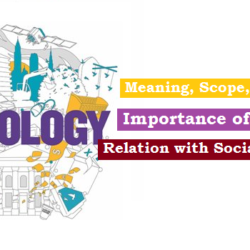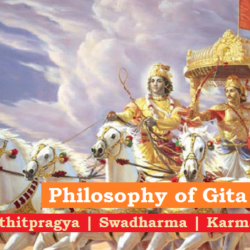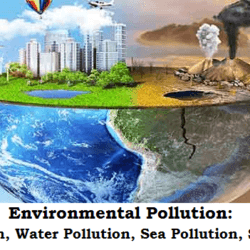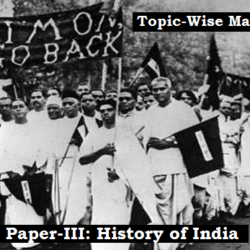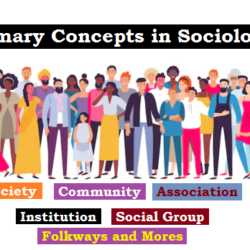
Poverty
The UN Human Rights Council has defined poverty as “A human condition characterized by the sustained or chronic deprivation of the resources, capabilities, choices, security and power necessary for the enjoyment of an adequate standard of living and other civil, cultural, economic, political and social rights”.
Poverty manifests itself in the form of both absolute poverty as well as relative poverty.
Absolute Poverty: This concept is based on absolute needs of the people and people are defined as poor when some absolute needs are not sufficiently satisfied. It is also defined in terms of insufficiency of basic needs. In India, these basic needs are measured in terms of calorie intake of 2400 in rural areas per person per day and 2100 in urban areas. The corresponding monetary yardstick for calorie intake is based on per capita monthly household expenditure.
Relative Poverty: This concept is related to the general standard of living in a society. Thus, according to this concept, people are poor because they are deprived of the opportunities, comforts and self-respect regarded as normal in the community to which they belong. In relative poverty, poor are defined as, a person or family whose incomes are less than the average income of the community. Thus relative poverty relates to inequalities in a society. India is characterized by both in extreme measures, i.e., absolute and relative poverty.
Causes of Poverty:
The extent of poverty in an economy is due to a wide range of factors as follows:
- Underdeveloped nature of economy
- Rapid growth of population in an overpopulated country; even if the national income increases, the per capita income remains the same due to increase in population.
- Large inequalities in the ownership of earning assets such as land, buildings, industry etc.
- Low level of productivity in agriculture and industry.
- Large scale unemployment and under-employment.
- Inequality of opportunity in acquiring education and skills
- Regional disparities
Programs for alleviation:
1. MGNREGA
2. Deendayal Upadhyay Antyodaya Yojana (DAY)
3. National Health Mission
4. Pradhan Mantri Suraksha Bima Yojna
5. Atal Pension Yojana
6. Pradhan Mantri Jeevan Jyoti Bima Yojana
7. Pradhan Matri Awaas Yojana
Poverty Line:
- A major challenge for financial inclusion and welfare schemes- identification of poor
- It is not just a statistical bench mark, it also has a policy purpose
- Alagh Committee (1970s) and Lakdawala Committee (1990s) recommended minimum calorie criteria
- Tendulkar Committee:
2014 (02) 2016 (02)- Focused on income level 15/- per day (rural), 20/- per day (urban)
- Estimated 37% poor people
- World Bank criteria:
- $1.25 per day (PPP terms) (has revised to $1.90 a day)
- 41% poor
- Rangarajan Committee:
- Reverted to food intake norms with inclusion of protein and fat requirement
- Recommended three components:
- Food component
- Non-food requirement of proteins and fats
- Behaviorally determined expenditure on non food items
- Urban poverty is higher than rural poverty
- Recommended entitlement programmes should be delinked from the poverty line (i.e. no more “BPL targeting”)
Unemployment
Unemployment is a situation when a capable and willing to do job workforce does not get work.
Types of Unemployment:
- Cyclical Unemployment: varies with the trade cycle, for example economic slowdown
- Frictional Unemployment: leaving and searching for a job may take a considerable amount of time
2014 (02) - Seasonal Unemployment: due to seasonal changes like winter or rain
- Structural Unemployment: structure of an industry changes, from use of bicycles to motorbikes and cars,
2016 (02) - Full Employment: Employment would be full literally, when every able-bodied adult works the number of hours considered normal for a fully employed person.
- Under Employment: a person with high skills works in low wage and low skills job
- Disguised Unemployment: their presence or absence does not make any difference to the output of the economy
Model (02)
Schemes for Skill Development: 2
• Pradhan Mantri Kaushal Vikas Yojana (PMKVY)
• National Apprentice Promotion Scheme
• Deen Dayal Upadhyay Grameen Kaushal Yojana
• Skill Development Initiative Scheme
• Seekho aur Kamao
• Hunar se Rozgar
• UDAAN
• Himayat Scheme

 Home
Home Syllabus
Syllabus Contact Us
Contact Us
